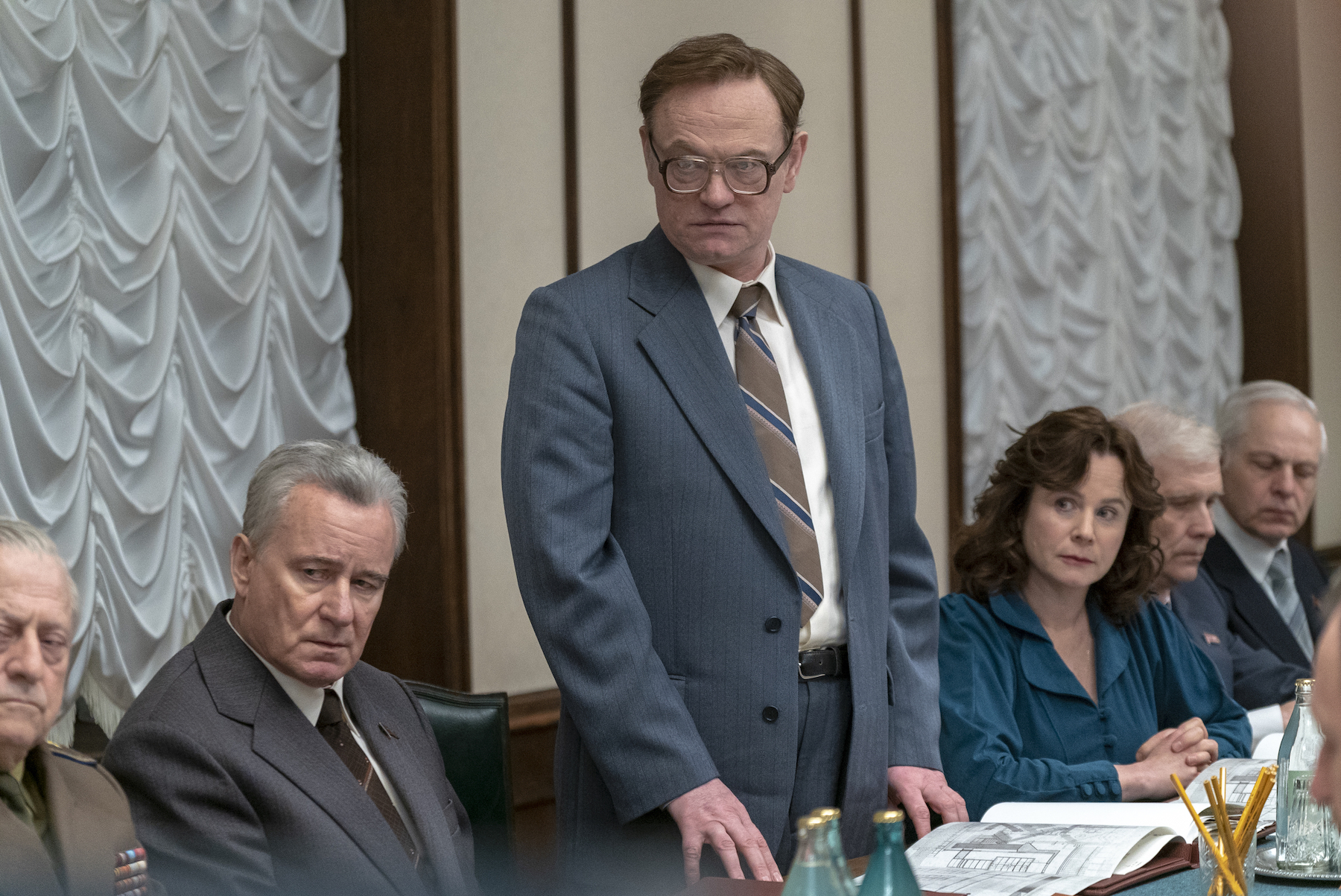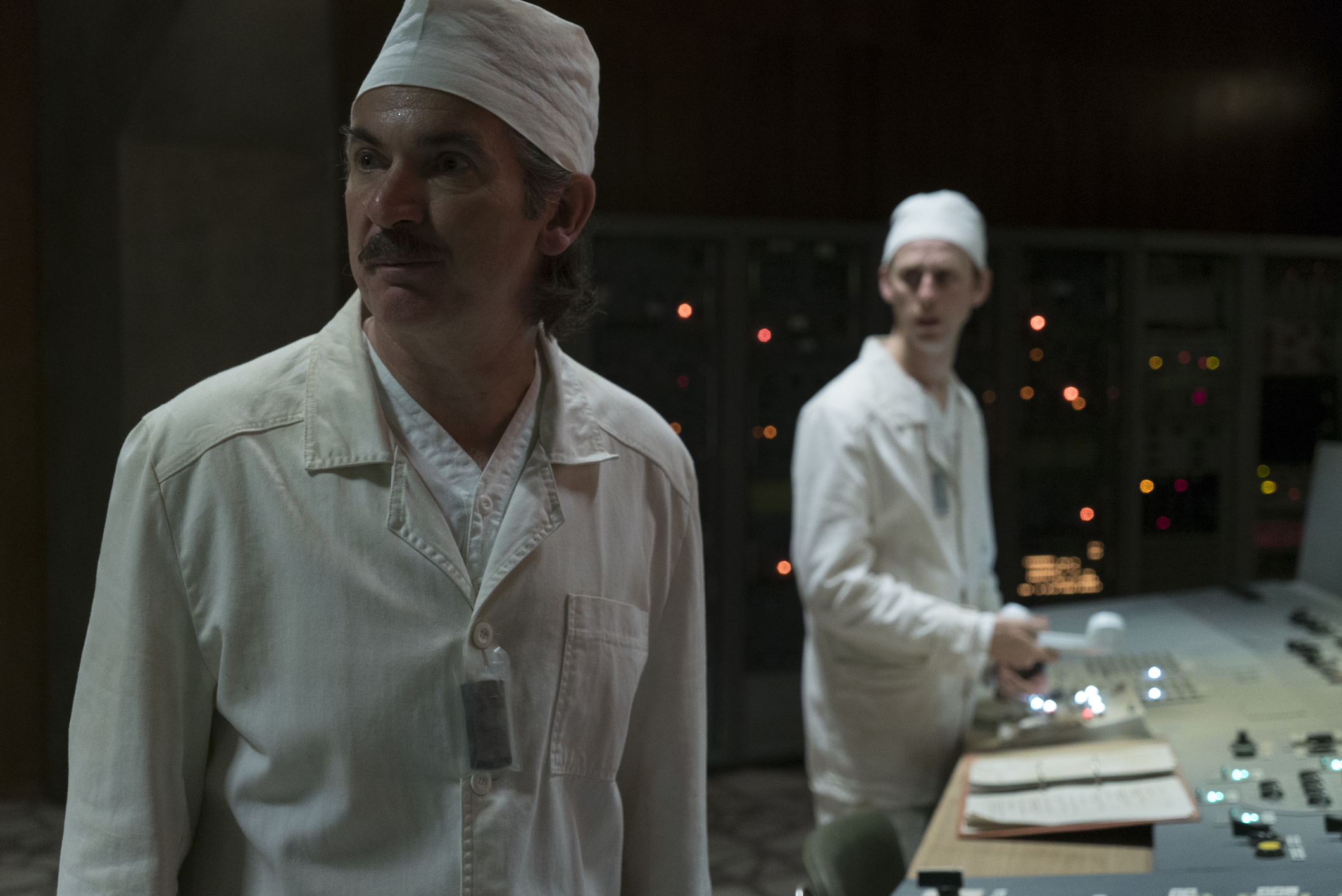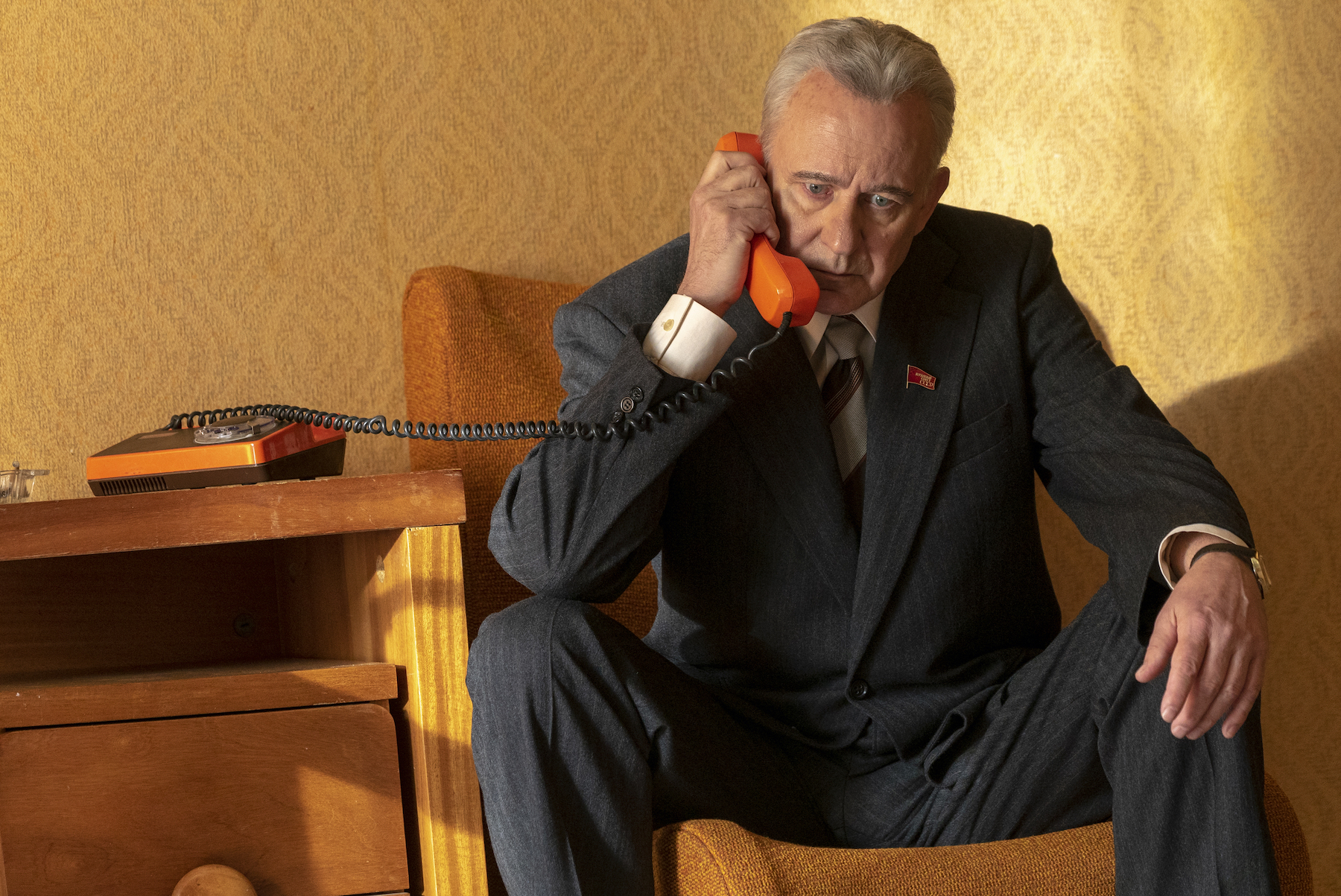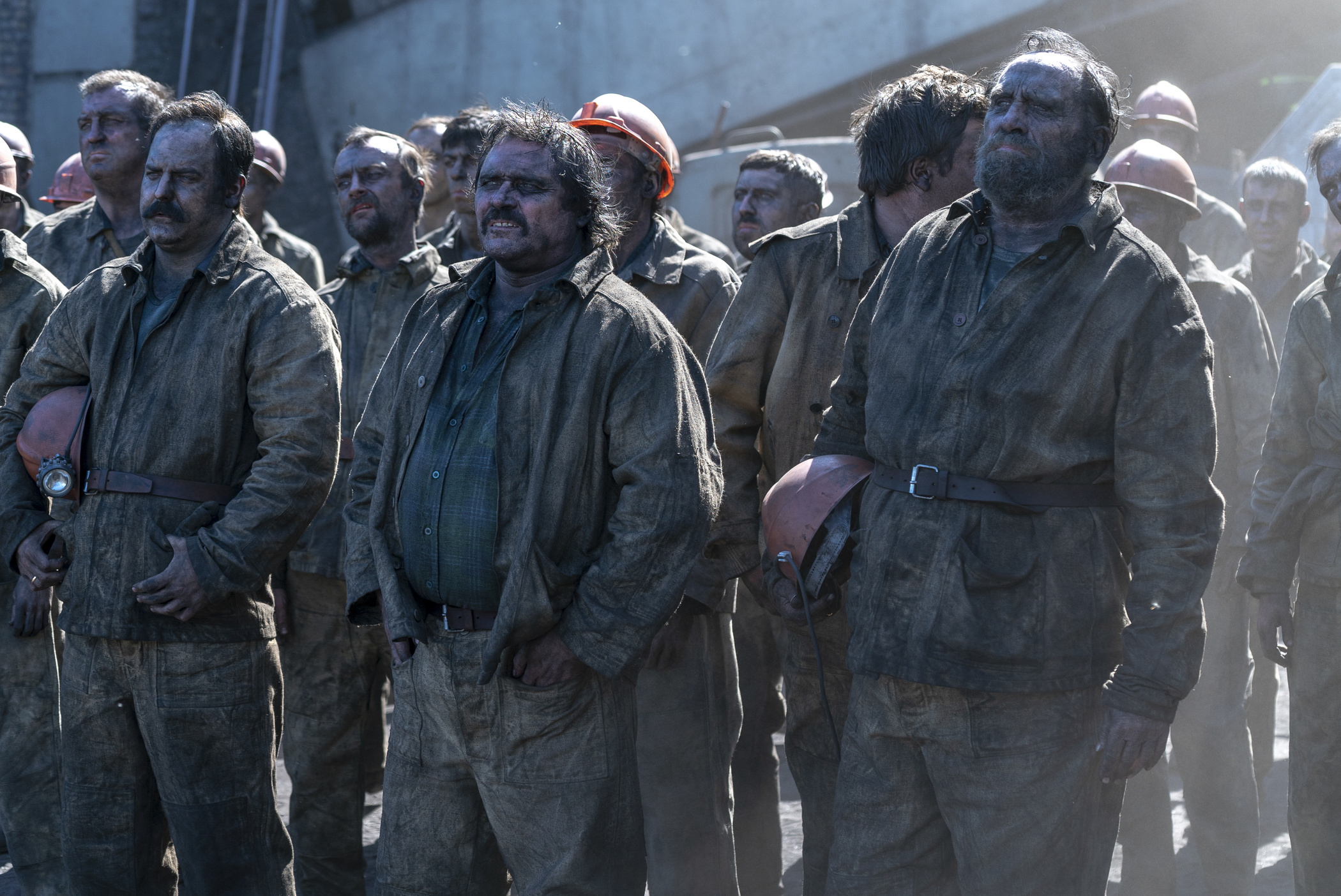Craig Mazin’s Years-Long Obsession with Making ‘Chernobyl’ Terrifyingly Accurate
Credit to Author: Drew Schwartz| Date: Mon, 03 Jun 2019 20:44:50 +0000
Craig Mazin wasn’t born in the Soviet Union. He doesn’t speak Russian. He wasn’t there, in 1986, when Reactor 4 at the Chernobyl Nuclear Power Station exploded, spewing an unprecedented amount of radiation into the air and killing anywhere from hundreds to tens of thousands of people—a toll that’s still being debated 33 years later. He wasn’t there to see the blast render entire cities uninhabitable, accelerate the collapse of the USSR, and forever reshape our collective relationship with the terrifying power of the atom. But somehow, in his five-part HBO miniseries Chernobyl, he has managed to capture this disaster, its fallout, and the lives of those affected by it so forcefully, it’s hard to believe he didn’t live through it himself.
Mazin, Chernobyl’s creator, writer, and executive producer, tells much more than the story of what went wrong at the nuclear plant that powered roughly 10 percent of Soviet Ukraine in the 1980s. His dramatization is about the failings of the Soviet system, and the unique set of unsolvable problems that system created. It is about “the cost of lies,” a phrase we encounter in its first scene, and the danger of a world without truth. But more than anything, it is about humanity: In Chernobyl’s exploration of the people responsible for the disaster, the first responders who died combatting it, and the everyday citizens whose lives were irrevocably changed by it, the series gives us a portrait of humanity in all its complexity—one as terrible, and beautiful, as the real thing.
Chernobyl accomplishes this, in part, by adhering as closely as it can to historical fact. Every major character save one—a nuclear physicist played by Emily Watson—has a real-life counterpart, from the scientist in charge of cleanup efforts (Valery Legasov, played by Jared Harris), to the wife of a firefighter at the scene of the explosion (Lyudmilla Ignatenko, played by Jessie Buckley). The clothing Chernobyl’s characters wear, the cars they drive, the cigarettes they smoke, the glassware they drink from, the wallpaper in their homes—all of it is staggeringly accurate, a product of more than two and a half years of research.
So how is it that Craig Mazin, a 48-year-old screenwriter from Brooklyn, managed to tell the story of Chernobyl so well? Why was he so drawn to it, and why was he so committed to getting the details right, down to the rivet on a firefighter’s uniform? These questions are, I imagine, on a number of Chernobyl viewers’ minds; they have been on mine since his name flashed across the screen at the end of the first episode.
I called Mazin to get answers. Ahead of Chernobyl’s finale on Monday, we spoke about his obsession with accuracy, the unbelievable lengths he went to achieve it, and the importance of telling the truth in a story about lies.

VICE: How was it that you even began thinking about the Chernobyl disaster, and what were the early stages of reading about it and researching it like?
Craig Mazin: Because I was 15 when Chernobyl happened, I’ve been vaguely thinking about it for most of my life. But somewhere around 2015, it occurred to me that I didn’t know how it happened, which seemed like a pretty bizarre lapse in my understanding of the world and how it functions. So I just started reading. I honestly just wanted to know, from a scientific point of view, what exactly went wrong that night. And what I discovered as I kept reading was something that was shocking, and remarkable, and kept coming at you. It was a little bit like I had discovered a war that no one had really written thoroughly about. And then, of course, I found out that people had—it’s just that it hadn’t crossed over into everyone’s consciousness. And I became obsessed.
I know you pored over Voices From Chernobyl, by Svetlana Alexievich. How prominent of a resource was that book, and what were the other primary sources you used to build up your understanding of what happened?
I used as many sources as I could find. I was looking at research articles in scientific journals; I was looking at governmental reports; I was looking at books written by former Soviet scientists who were at Chernobyl; I was reading books by Western historians who had looked at Chernobyl. I watched documentaries; I read first-person documents.
And then there was Voices From Chernobyl, which is unique. What Svetlana Alexievich did there, I think, was capture an aspect of history we rarely see, which is the story of the people who you wouldn’t otherwise even know existed. We look at history from the point of view of the big movers, the big players, and she looks at history through the eyes of human beings. They’re all equal to her: Whether they are generals or party leaders or peasants, it doesn’t matter. And I thought that was just beautiful. It really inspired me.
And how long did that process of researching go on before you actually sat down to write Chernobyl?
I would say about two and a half years. Of research, and preparing, and structuring. Granted, it wasn’t my only job—I was writing movies, and rewriting movies, and being a husband, and a dad—so there was plenty going on. But I was finally ready to dig into the writing in 2016.
Why was it so important for you to make this show as accurate and as authentic as you could?
Well, at the heart of this story is a question about what happens when we disconnect from the truth. And the Soviet system was essentially an enormous monument to the useful lie. They made lying an art: They lied to each other, they lied to the people above them, they lied to the people below them, and they did it out of a sense of survival. Ultimately, it just became expected, and the truth was debased. When it did kind of peek its head out, it was attacked. So I thought the worst possible thing I could do in telling a story like that would be to contribute to that problem by over-fictionalizing, over-dramatizing.
You have to make changes. You can’t describe two years in five hours and not make changes. But that’s another reason why I do this companion podcast with Peter Sagal: to talk about those changes and why I made them.
How closely were you basing the dialogue on your source material? I know that several times throughout the show, these characters say what their real-life counterparts said almost word-for-word, if not verbatim. Why did you make that choice?
There were times when people said things that I thought were remarkable. And if I thought they were remarkable, well, what’s the point of changing them? So when [Reactor 4 shift supervisor Aleksandr] Akimov says, “We did everything right,” and immediately following the explosion says, “Something strange has happened”—he said that. That’s what he said: “Something strange has happened.” I can’t come up with a better line than that. And why would I want to? That’s the most amazing, human thing to say, you know?
As writers, our job is to try to create, in a fake space, something that feels true. That’s just straight-up fiction: Invent a character that doesn’t exist; make them seem like they do. If you’re describing a character that did exist, and you have something like that, you should use it.

The other day, I was talking to Slava Malamud, a freelance journalist who’s been writing exhaustive breakdowns of each episode. He was born and raised in the USSR, and remembers Chernobyl well. He told me that the way these characters speak—even if they’re speaking in British accents, or Irish accents—is the way people during that time, from that place, would speak. How did you manage to accomplish that?
I saw he said that, and it was very moving for me, and very gratifying. I don’t know how I did that. That’s my honest answer. I guess I just read a lot, and I had absorbed a lot. I watched a lot of documentaries. I looked at faces. There was something that—I don’t even know if it was Soviet as much as just Eastern European, Slavic, Russian, and Ukrainian—there’s kind of a sensibility there. And I admire it. I think that’s the most important thing: I admire the way that they think and go about [things]. It’s beautiful.
I know our director, Johan Renck, worked hard with our actors to make sure that they occupied a certain kind of Soviet physicality. There’s a weight there. The experience of the Soviet people in 1986 was nearly a century of just hardship, and misery, and war, and famine, and it’s in their bones. And here comes yet another thing: Chernobyl.
You’ve talked about having people who lived in the Soviet Union during Chernobyl review your scripts—particularly one woman, who read all of them—and making changes based on their input. Can you tell me about your relationship with that woman, and what it was like to work with her?
I spoke to quite a few people, but you’re right, there was one woman specifically that I worked with closely. I didn’t know her personally before this, but there was a screenwriter who said, “You know, my wife grew up in Soviet Ukraine; she was there in 1986, if you ever want to talk to her.” So I had questions for her, and kind of interviewed her. And she struck me as somebody who was very conscientious and thoughtful and smart.
I try my best to live by the principle that if you’re going to be telling a story that you didn’t live, tell it with as much respect as you can for the people who did live it. And this is one of the ways we show respect: by getting the details right. We were obsessive over it. She was great, because she did catch some things that I don’t know if we would have known about. And of course, we did have the benefit of having a crew that was largely Lithuanian. Many of them had grown up in the Soviet Union, so they would occasionally say, “Hey, we would actually do this, and not this.”

Who else did you speak with who had a firsthand knowledge of Chernobyl and life in the Soviet Union?
Well, we met with people who actually lived in Pripyat at the time of the disaster. We spoke to a lot of people. We spoke to former liquidators. But some of the most influential people [were people] I spoke to before I ever wrote a word, or ever went to Eastern Europe at all. And those were scientists. The very first person I talked to, in terms of research on this project, was a nuclear physicist at USC, who agreed to spend an hour talking with me and walking me through some of the basics of how this all happened.
As I understand it, you continued to consult with nuclear scientists to make sure that your description of how Reactor 4 works, and how it exploded, was spot-on. Why was it so important to try to nail the specifics of what went wrong on a scientific level?
Because I respect science, and I respect the scientists who solved that problem. And I respect expertise, which I think is currently… I don’t know, not fashionable? So my feeling is, if I’m going to make this show, and there’s some science in it, I want scientists to be able to watch it and go, “You know what? Thank you. Good job.” [Laughs.]
When it comes to the science, I want people to say, “OK, he cared. He cared enough to get it right.” If you don’t understand the science underneath a story that is scientific in at least one significant aspect, then don’t write it. That’s my feeling.
And was that a pretty intensive process for you, trying to wrap your head around all the science?
Yes, but it was a labor of love. I was fairly scientifically inclined as a college student, so figuring a lot of that stuff out was a joy. I cannot pretend that I am a qualified nuclear physicist; I am not. There are still aspects of a nuclear reactor, or at least that nuclear reactor, that are a little bit puzzling to me to this day, particularly the way water and steam move around—I could really get boring about it. But the essentials were great. And I kept researching, kept asking pesky questions when I didn’t understand something that I thought was important to understand.
“I try my best to live by the principle that if you’re going to be telling a story that you didn’t live, tell it with as much respect as you can for the people who did live it. And this is one of the ways we show respect: by getting the details right.”
Let’s talk about production design for a bit. Not only are, say, the firefighters’ uniforms exact replicas, but the children’s backpacks, the teacups, the rations these characters eat, the wallpaper—it’s all accurate. How arduous was the process of getting all of that right?
Well, I’d love to tell you that I was the one that researched the wallpaper and the teacups, but I was not. The production design was headed up by Luke Hull, who did an incredible job. And then he had an entire team below him who worked on props, set decoration, set building, and wallpaper. But a lot of it was just us going to locations, which we knew had not changed significantly since the Soviet time, and learning from those things. We had a general standing philosophy from the beginning, which was: Accuracy is everything to us. I wanted people in Ukraine and Russia and Belarus to watch this show and say, “You see us; you saw us; thank you for that.” As opposed to, “This is just some American’s fever dream of what Soviet citizenry was like.”
How many Americans are going to notice that the license plate of a car driving through Soviet Ukraine has the proper abbreviation for the Kiev Oblast? Twelve? I don’t know. But I want them to know! The people who do know, I want them to see it and go, “Wow. They cared.” This was a terrible tragedy for them. How strange would it be if another country made a story about 9/11 and, I don’t know, had firefighters wearing bizarre costumes?
If the goal was to get folks from the former Soviet Union to appreciate Chernobyl, it seems like you succeeded.
From what I can tell, we have struck a good chord over in Ukraine and Russia. It’s been the most gratifying part of this, to get feedback from former Soviet citizens saying “Thank you” and “You got it.” Yes, there’s going to be some grumbling from—I don’t know what you’d call them—Soviet apologists, people who look back fondly on the good old days of the USSR, which is a strange phrase to utter. But by and large, most people there seem really, really positively taken with it, because—as I’ve said many times—yes, the villain in this story is the Soviet system. But the hero of this story, collectively, are the Soviet people. I hope that they find pride in watching this.

Chernobyl makes a few departures from strict fact. What was your rationale behind making minor adjustments to what actually transpired and what was actually said, or inventing a character here and there?
We had a basic rule of thumb: If you had to change something to be able to tell the story, narratively, then that was the only reason we could change it. We couldn’t change things to make them scarier; we couldn’t change things to make them more dramatic, or more sensational, or more horrifying. I thought that the truth of what happened there was terrifying and distressing enough. But I made sure that HBO and Sky knew, before we even shot a frame, that my intention was to do a companion podcast where I would hold myself accountable for those changes. I never wanted people to think I was pulling a fast one, or trying to get away with something. None of the changes were there to ramp up drama.
Especially having hewed so closely to historical fact for so much of the show, did you ever feel conflicted about making some of those inventions and changes?
Yes. [Pauses.] At times I thought, Well, there’s a difference between the perfect way of doing something in terms of historical accuracy, and the perfect way of doing something so that people will watch it and appreciate what matters. You can’t have both, at least in that format. You can write an enormous book, where you hew as closely to fact as you can, because that’s the purpose of that medium. But for this medium, no. I don’t think anyone’s going to want to watch, I don’t know, 100 hours of brutally detailed Chernobyl, nor will anyone give me money to make it. So you have to make choices. But yeah, let’s just say this: I felt it every time I did it. And I tried, every time I did it, to not do it. So the [adjustments] like that—it hurt a little bit when I did them. And I was only able to kind of assuage myself by knowing that I was going to talk freely about it to people, so that they knew.
A lot of people who watch Chernobyl finish an episode, and then immediately start researching the history of the accident. How has it made you feel that that’s such a common reaction—that you’re inspiring people to look into this event?
Well, I love it. And I don’t love it because of any sense of ego. They’re not doing it because they’re fascinated with me; they’re doing it because they’re fascinated with the very thing that fascinated me. Chernobyl. It is a remarkable story. And also, I don’t think in the West we ever had a really proper understanding of the mindset and the actual everyday lives of Soviet citizens in the middle of the Cold War. It’s not necessarily what we were always told: There was laughter. There was happiness. There was love. There were a lot of common human experiences. And there was also bravery, and just remarkable spirit. And I think people are fascinated by that as much as anything else.
Governments are different, and philosophies are different, but when it comes down to it, a schoolteacher is a schoolteacher is a schoolteacher. A butcher is a butcher is a butcher. We are people. And we are far more common than we ever imagine.
This interview has been edited and condensed for length and clarity.
Sign up for our newsletter to get the best of VICE delivered to your inbox daily.
Follow Drew Schwartz on Twitter.
This article originally appeared on VICE US.